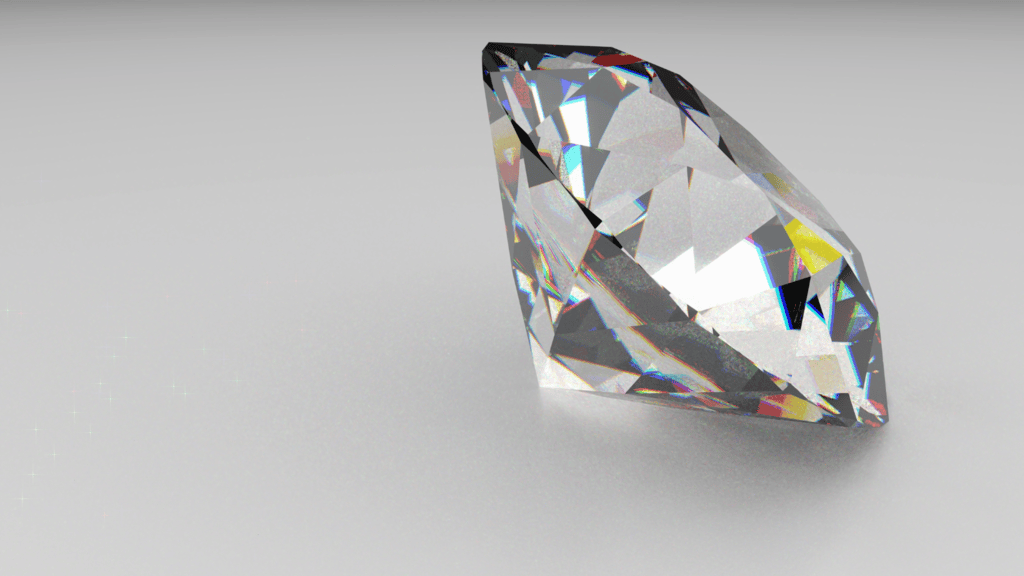So you’ve done the hard part: developed a beautiful relationship with a person you’re ready to spend your life with and you want to show them how you feel with jewelry.
Now comes the slightly easier part: deciding on a diamond that will dazzle as long as your love. And being able to read a diamond cut chart will make that search so much easier.
Consider this your guide to navigating the gemological ins and outs of reading a diamond chart.
The Basics: GIA Cut Grade
When you’re out shopping for your diamond, you will most likely come across GIA Diamond Grading Reports. These reports are from the diamond authorities—and are very detailed in order to cover everything important about your diamond—but it can be a lot of information at once.
The GIA diamond cut grade alone is probably not sufficient information to make a decision that may last a lifetime, but it is definitely the place to start.
GIA Cut Grade is only available for standard round brilliant cut diamond, so if you and your partner are planning to go with a rectangular diamond, a heart shape diamond, or another diamond shape and cut your best bet is going to be to inspect the diamond in person or get an opinion on your diamond of choice from an expert.
If you are thinking about going with a standard round brilliant cut diamond, then the GIA Cut Grade and cut grade chart can help you narrow down the list of diamonds you need to see in person and pick up on any important flaws in a diamond that you may not be able to discern just by looking at it.
When you’re looking at the GIA Diamond Grading Report, the Cut Grade is number 8 and the GIA diamond cut scale, or diamond cut grade chart, is number 19.
The Cut Grade follows the GIA Cut Scale, which is as follows:
- Excellent Cut
- Very Good Cut
- Good Cut
- Fair Cut
- Poor Cut
Since the “sparkle”—or brilliance—of a diamond is determined more by the cut of the stone than by the diamond color or diamond clarity, you definitely want to be shopping in the GIA Excellent Cut Grade range, and compromising a little on diamond color and/or diamond clarity as your budget demands.
However, not all Excellent diamonds are equal, which is why the GIA Cut Grade is not the end-all-be-all of your diamond search. At LuxyVerse we take extra steps to ensure your diamond is of the highest quality. We utilize our straightforward grading system to categorize each diamond as Super Ideal, Ideal, Very Good, and Good. Here at LuxyVerse, we believe in our high standards, so no diamond will leave our facility below a Good diamond cut grade.

Beyond The Cut Grade: More Information About The Perfect Diamond
In order to get more information than the GIA Cut Grade, you’ll need to understand diamond anatomy, the way that the industry measures diamond proportions, and what exactly you’re looking for in the ideal diamond.
Diamond Anatomy
You’ve heard about diamonds being multi-faceted—and the particular anatomy of a round brilliant diamond will explain exactly how and why a perfect diamond has 57 or 58 facets (depending on whether or not your diamond has a culet).
And it will help you to know exactly what you’re looking at when you evaluate a diamond to decide if it’s the perfect fit for you.
The Crown
The Crown is the top of the diamond or the part of the diamond that you see when it’s set in diamond engagement rings. It has four types of facets:
- The table is the large, flat, octagonal facet on the top of the diamond. This is the part that you will see in the middle when you look down at the diamond engagement ring, and the part through which you can see the pavilion or lower part of the diamond.
- Bezel facets are not as large as the table but larger than star facets or upper half facets. They are quadrilateral, meaning that they have four sides, and there are eight of them around the crown of your diamond.
- Star facets are the triangular facets between the table and the bezel facets. There are eight star facets, and each one matches up with one side of the table.
- Upper half facets are the triangular facets between the bezel facets and the girdle. There are sixteen upper half facets, and they should match up with the lower half facets of the pavilion.
The Girdle
The girdle is the band between the crown and the pavilion of the diamond. If you like geometry, it may help to think of the girdle as the largest circumference of the diamond.
While the girdle is not technically considered to be a facet, it can be faceted or smooth. The girdle can vary in thickness, which the GIA denotes on the following scale:
- Extremely Thin
- Very Thin
- Thin
- Medium
- Slightly Thick
- Thick
- Very Thick
- Extremely Thick
All of this information about the girdle will be noted on the proportions diagram, which is number 14 on the GIA Report.
The Pavilion
The Pavilion is the lower, pointed part of the diamond, which will usually be inside of engagement ring settings. It consists of three types of facets:
- Pavilion main facets are the eight facets that meet up to form the point of the diamond. These facets have four sides, with two sides aligning with the lower half facets and the other two sides meeting up with the other main facets to form the point.
- Lower half facets are the sixteen triangular facets of the pavilion that separate the pavilion main facets and match up with the upper half facets of the crown.
- The culet is the point of the diamond. Depending on the particular cut, your diamond may not have a culet because the point may be too fine to be considered a facet.
| Component | Ideal Range | What It Means | Impact on Brilliance |
| Table Percentage | 53% – 58% | Ratio of the table width to the diamond’s diameter. | Affects light reflection and sparkle. |
| Depth Percentage | 59% – 62.5% | Ratio of total depth to diameter. | Impacts how light is reflected and refracted. |
| Crown Angle | 34° – 35° | Angle of the crown (top part) above the girdle. | Determines fire and scintillation. |
| Pavilion Angle | 40.6° – 41° | Angle of the pavilion (lower part) below the girdle. | Influences light leakage and brilliance. |
| Girdle Thickness | Thin to Slightly Thick | Thickness of the diamond’s outer edge. | Affects durability and appearance. |
| Culet Size | None to Very Small | Flat facet at the bottom tip of the diamond. | Affects symmetry and light reflection. |
| Symmetry | Excellent to Very Good | Alignment of facets. | Enhances overall beauty and light performance. |
| Polish | Excellent to Very Good | Smoothness of the diamond’s surface. | Impacts brilliance and sparkle. |
Diamond Proportions
Now that you’re familiar with diamond anatomy, there are a few important standard diamond measurements that you need to know in order to understand the proportions diagram on the GIA Report.
Essentially, having these measurements in proportion to each other creates a diamond geometry that allows light to enter through the crown of the diamond and then refract back through the table and to your eye, creating that brilliance or sparkle.
The further a diamond is from the correct proportions, the more likely it is to refract light incorrectly, losing some of the light and reducing its brilliance.
Before we get into it, this next section gets a little mathy. If you don’t like math, that’s okay. Just focus on the number range for each measurement and be sure to double check that your diamond falls into that range.
- The average girdle diameter is just the diameter across the widest part of the diamond (the girdle). The reason that it’s called the average girdle diameter is that no diamond is perfectly round, so the GIA measures the diameter in several places and then uses an average of the smallest and largest diameters to find the average girdle diameter. This measurement is important because the GIA uses it as the reference point when calculating almost all of the other important proportions.
- The total depth percentage is the depth or height of the diamond from the face of the table to the point of the culet, divided by the average girdle diameter and multiplied by one hundred. The purpose of this measurement is to tell you whether your diamond has the correct proportion of width and height. Ideally, you want this number to be between 58% and 62%.
- The table percentage tells you how big the table of your diamond is in proportion to the width, or average girdle diameter, of the diamond. This number should be between 54% and 57%.
- The star length percentage is the percentage of the length from the girdle to the edge of the table that is taken up by the star facet. In order for the diamond to have a nice top-down view, this number should be between 45% and 55%.
- The crown angle is the measurement of the angle between the surface of the bezel facet and the surface of the table. The crown angle should be between 32° and 36°. This angle works closely with the table percentage and the pavilion angle to create the ideal round brilliant diamond shape for a round brilliant diamond.
- The crown height percentage tells you the proportion of your diamond’s crown height to its average girdle diameter. This number should be between 14% and 16%.
- The pavilion angle is the angle between the surface of the table and the surface of the pavilion main facet. This angle should be between 38° and 44°.
- The pavilion depth percentage is the proportion of the pavilion depth to the average girdle diameter. This number should be between 41% and 48%.
- The lower-half length percentage is the percentage of the distance from the girdle to the culet that is taken up by the lower-half facet. (The rest of this distance is covered by the pavilion main facets alone). This number should be between 75% and 85%.
- The girdle thickness percentage is the proportion of the girdle thickness to the average girdle diameter. This number will be a low percentage, usually somewhere between 1.0% and 4.0%. However, it is often expressed in words. In general, you want a diamond with a medium to slightly thick girdle, as a very thin girdle makes the diamond susceptible to breakage and a very thick girdle adds unnecessary weight and expense.
- The culet size description will range from none to extremely large in increments. In general, smaller culets will produce a better face-up appearance. However, diamonds with no culet can be difficult to set and more susceptible to damage from everyday wear.

For a Cut That Sparkles, Trust LuxyVerse
LuxyVerse is here to help. If that diamond shape cut chart is still giving you trouble, get in touch with the experts at LuxyVerse today, and we’ll help you find the perfect diamond for your special day.
Discover our curated collection of authentic pre-owned luxury watches, luxury jewelry, and accessories from the world’s most exclusive brands. Elevate your style with confidence and elegance.






Leave a Comment